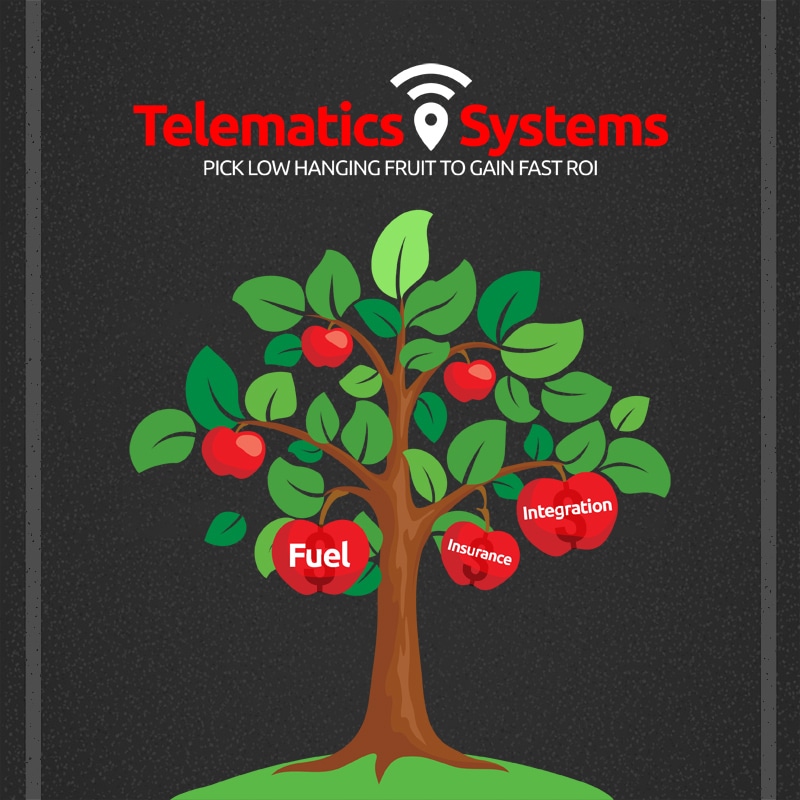Telematics Systems: Pick Low Hanging Fruit to Gain Fast ROI

With today’s Telematics Systems, we want results much more quickly than we ever have in the past. While gaining a return on investment (ROI) in the long term matters, it is a lot easier to see value from a Telematics System that yields a fast ROI. Much of what you’ve read about ROI from Telematics Systems focuses on the long term benefits. This blog focuses on the changes you will see almost immediately that helps reduce costs and increase revenue.
Fleets like yours that go after the low hanging “telematics fruit” are yielding the maximum ROI from the technology that has been known to exceed 500% in less than a year.
3 areas that will change almost immediately when you implement a telematics system into your operations.
1. Reduce Fuel Use
Probably the easiest metric to monitor and take control over with a telematics system is fuel. It is incredibly common for fleets to spend much more on fuel than necessary without a telematics system due to activities like excessive idling, inefficient driving, and more. Tracking fuel usage with telematics systems makes a big impact and fast. For example, Parks and Sons, a waste and recycling hauler, reported saving over $150,000 on fuel in the first year by identifying overlapping routes and correcting this inefficiency.
2. Integrate Platforms
Integrating software definitely makes life easier. Along with simplification, it can help you identify inconsistencies and other issues that are easily overlooked when data is monitored separately. Whitton Companies, a residential home construction company, is a huge advocate of integrating telematics systems with their other backend software platforms. By integrating telematics data into their payroll system, they discovered that they could fix payroll discrepancies throughout their entire workforce at the click of a button. Since they implemented this integration, Whitton has been able to save $100,000 per year on labor costs alone.
3. Qualify for Lower Insurance Premiums
According to the National Association of Insurance Commissions, Usage-Based Insurance (UBI) is a recent movement by auto insurers to more closely align driver behavior with insurance premiums. How it works is that insurance underwriters are able to use telematics systems to gather areas of interest like rapid acceleration, harsh braking, hard cornering, and more to help determine premiums accordingly. By using telematics to track mileage and driving behavior, you will immediately qualify for a lower insurance premium across your entire fleet.





